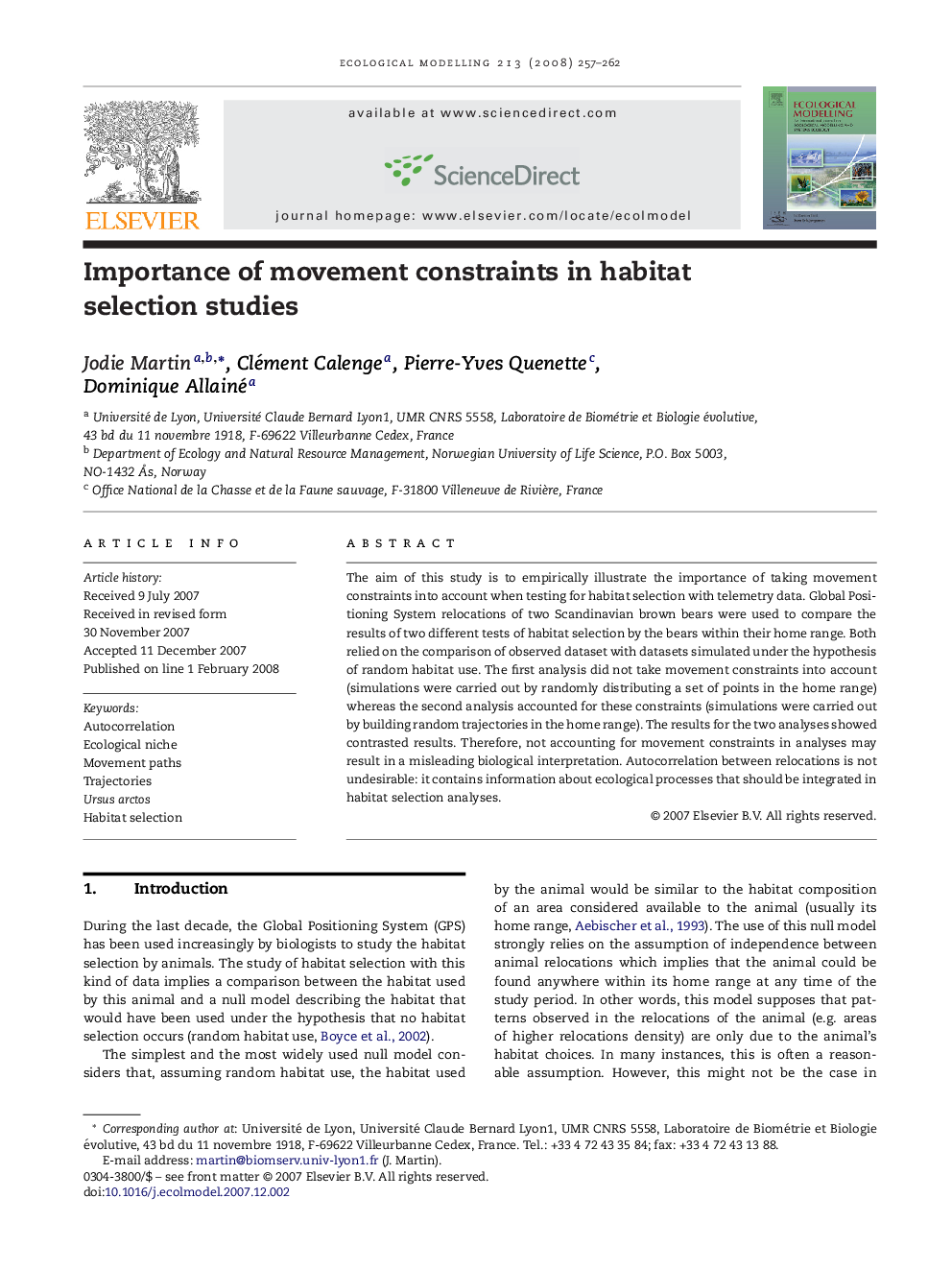| Article ID | Journal | Published Year | Pages | File Type |
|---|---|---|---|---|
| 4378248 | Ecological Modelling | 2008 | 6 Pages |
The aim of this study is to empirically illustrate the importance of taking movement constraints into account when testing for habitat selection with telemetry data. Global Positioning System relocations of two Scandinavian brown bears were used to compare the results of two different tests of habitat selection by the bears within their home range. Both relied on the comparison of observed dataset with datasets simulated under the hypothesis of random habitat use. The first analysis did not take movement constraints into account (simulations were carried out by randomly distributing a set of points in the home range) whereas the second analysis accounted for these constraints (simulations were carried out by building random trajectories in the home range). The results for the two analyses showed contrasted results. Therefore, not accounting for movement constraints in analyses may result in a misleading biological interpretation. Autocorrelation between relocations is not undesirable: it contains information about ecological processes that should be integrated in habitat selection analyses.
